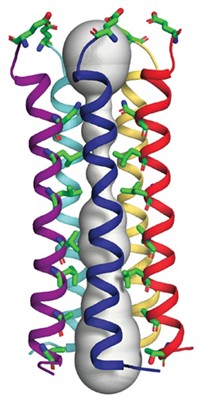Advertisement
Grab your lab coat. Let's get started
Welcome!
Welcome!
Create an account below to get 6 C&EN articles per month, receive newsletters and more - all free.
It seems this is your first time logging in online. Please enter the following information to continue.
As an ACS member you automatically get access to this site. All we need is few more details to create your reading experience.
Not you? Sign in with a different account.
Not you? Sign in with a different account.
ERROR 1
ERROR 1
ERROR 2
ERROR 2
ERROR 2
ERROR 2
ERROR 2
Password and Confirm password must match.
If you have an ACS member number, please enter it here so we can link this account to your membership. (optional)
ERROR 2
ACS values your privacy. By submitting your information, you are gaining access to C&EN and subscribing to our weekly newsletter. We use the information you provide to make your reading experience better, and we will never sell your data to third party members.
Proteomics
LUX-MS identifies interacting molecules on cell surfaces
Method works with antibodies, peptides, small molecules, and even viruses
by Celia Henry Arnaud
December 17, 2021
| A version of this story appeared in
Volume 99, Issue 45
Proteins on the surfaces of cells act as gateways between the cell and its surroundings. The interactions of these proteins with one another and with their ligands can be difficult to determine. A team led by Bernd Wollscheid of the Swiss Federal Institute of Technology (ETH), Zurich, and the Swiss Institute of Bioinformatics has developed a light-controlled method called LUX-MS that enables the researchers to identify proteins and ligands that are close to one another on cell surfaces (Nat. Commun. 2021, DOI: 10.1038/s41467-021-27280-x). LUX-MS works with a wider variety of ligands than previous methods do. The researchers couple ligands, such as antibodies, peptides, or small molecules, to thiorhodamine, which serves as a singlet oxygen generator when irradiated with light from a light-emitting diode. The singlet oxygen oxidizes certain amino acids, such as histidine, in nearby proteins. Proteins farther away are not oxidized. The researchers add a biotin handle to the oxidized amino acids. The biotin enables those proteins to be captured for subsequent mass spectrometric analysis. The researchers used the method to identify proteins that interact with antibodies, peptides such as insulin, and small biomolecules and drugs. They also labeled bacteria-targeting viruses and determined which proteins on the cell surface the viruses interact with.





Join the conversation
Contact the reporter
Submit a Letter to the Editor for publication
Engage with us on Twitter